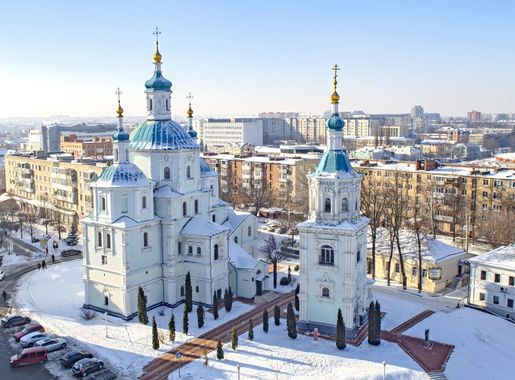
Sumy Region: A Hidden Gem in Ukraine
Discover the charm of Sumy Region in Ukraine, where natural beauty, rich history, and vibrant culture come together to offer an unforgettable travel experience.
Sumy Region, located in northeastern Ukraine, is a destination filled with natural beauty, rich history, and cultural heritage. The region is known for its picturesque landscapes, including rolling hills, dense forests, and pristine rivers. Visitors can enjoy a tranquil escape from the hustle and bustle of city life by exploring the region's many parks and nature reserves. The city of Sumy, the administrative center of the region, offers a blend of historical and modern attractions. Wander through the charming streets to discover stunning architectural landmarks, such as the Resurrection Cathedral and the Sumy State Art Museum. The city also boasts numerous cafes, restaurants, and shops where you can experience local cuisine and hospitality. Beyond the city, the Sumy Region is dotted with quaint villages and towns, each with its own unique charm. Visit Trostyanets to explore the historic Koenig Manor and the Chocolate Museum, or head to Putyvl to see the ancient Molchansky Monastery. The region is also home to several annual festivals and events that celebrate local traditions and culture, offering a perfect opportunity to immerse yourself in the local way of life.
Local tips in Sumy Region
- Visit Sumy Region in the spring or summer for the best weather and to see the region's natural beauty in full bloom.
- Try local dishes such as borscht, varenyky, and holubtsi at traditional Ukrainian restaurants.
- Take a guided tour to learn more about the history and culture of the region, especially if visiting historical sites.
- Check the local event calendar to see if your visit coincides with any festivals or cultural events.
- Rent a bike to explore the countryside and small villages at your own pace.
Sumy Region: A Hidden Gem in Ukraine
Sumy Region, located in northeastern Ukraine, is a destination filled with natural beauty, rich history, and cultural heritage. The region is known for its picturesque landscapes, including rolling hills, dense forests, and pristine rivers. Visitors can enjoy a tranquil escape from the hustle and bustle of city life by exploring the region's many parks and nature reserves. The city of Sumy, the administrative center of the region, offers a blend of historical and modern attractions. Wander through the charming streets to discover stunning architectural landmarks, such as the Resurrection Cathedral and the Sumy State Art Museum. The city also boasts numerous cafes, restaurants, and shops where you can experience local cuisine and hospitality. Beyond the city, the Sumy Region is dotted with quaint villages and towns, each with its own unique charm. Visit Trostyanets to explore the historic Koenig Manor and the Chocolate Museum, or head to Putyvl to see the ancient Molchansky Monastery. The region is also home to several annual festivals and events that celebrate local traditions and culture, offering a perfect opportunity to immerse yourself in the local way of life.
When is the best time to go to Sumy Region?
Iconic landmarks you can’t miss
Memorial of Glory
Explore the Memorial of Glory in Sumy, a serene park honoring the sacrifices of heroes with beautiful monuments and a peaceful atmosphere.

Spaso-Preobrazhensʹkyy Kafedralʹnyy Sobor (Russian church in UA)
Explore the Spaso-Preobrazhenskyy Kafedralnyy Sobor in Sumy, a breathtaking Orthodox cathedral rich in history and stunning architecture.

Holy Resurrection Cathedral
Discover the architectural beauty and spiritual significance of the Holy Resurrection Cathedral in Sumy, a must-visit Orthodox church and tourist attraction.

Regional Museum of Art
Discover the Regional Museum of Art in Sumy, where tradition meets contemporary creativity in a stunning cultural setting.
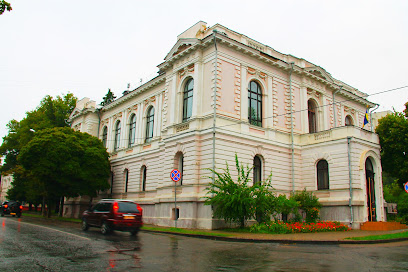
Sumy Regional Museum
Discover the fascinating history and vibrant culture of Sumy at the Sumy Regional Museum, a must-visit destination for all travelers.
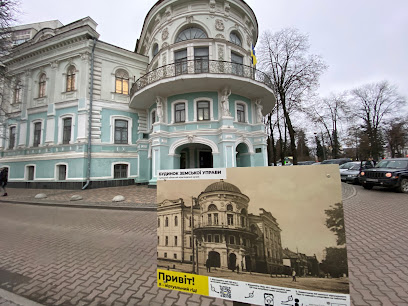
Ivanu Kharytonenku
Explore Ivanu Kharytonenku, a historical landmark in Sumy, Ukraine, rich in cultural heritage and architectural beauty.
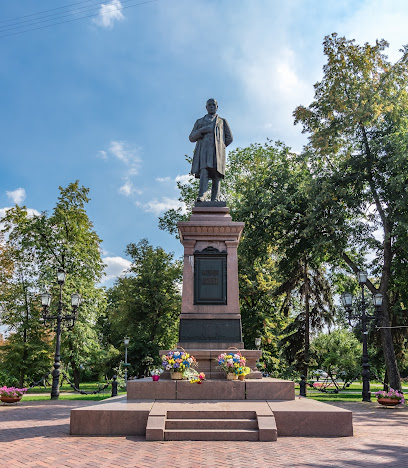
Unmissable attractions to see
Children's Park Kazka
Children's Park Kazka in Sumy offers a magical blend of nature and play, perfect for families and adventure seekers exploring Ukraine.

Kozhedub Culture and Recreation Park
Explore the lush landscapes and vibrant culture of Kozhedub Culture and Recreation Park in Sumy, Ukraine, a perfect escape for tourists seeking relaxation and adventure.
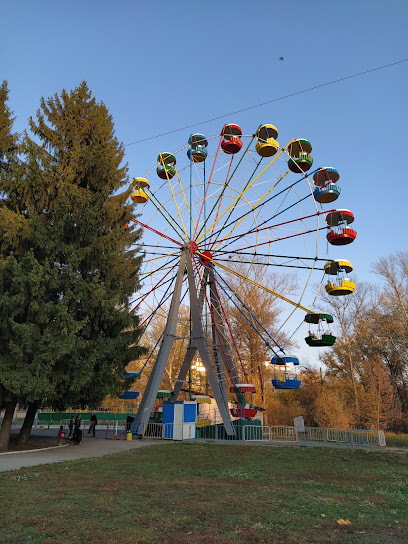
Memorial of Glory
Discover the Memorial of Glory in Sumy, a serene place of remembrance that honors the sacrifices of the past amidst beautiful landscapes.

Spaso-Preobrazhensʹkyy Kafedralʹnyy Sobor (Russian church in UA)
Explore the breathtaking Spaso-Preobrazhenskyy Cathedral in Sumy, a masterclass in Orthodox architecture and a serene spiritual retreat.
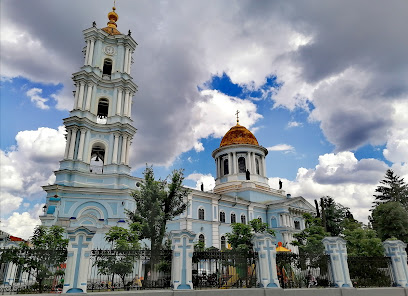
Holy Resurrection Cathedral
Explore the Holy Resurrection Cathedral in Sumy, a stunning architectural masterpiece and spiritual sanctuary reflecting Ukraine's rich culture and history.
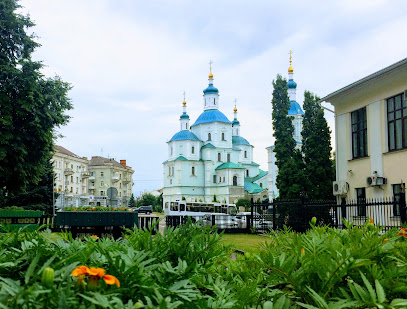
Trinity Cathedral
Explore the architectural beauty and serene atmosphere of Trinity Cathedral, a spiritual landmark in the heart of Sumy, Ukraine.
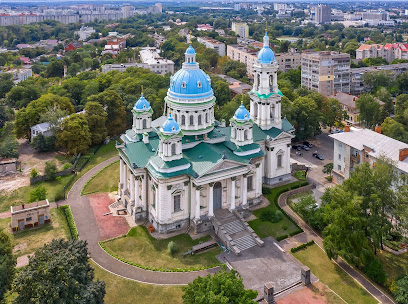
Sugar Monument
Discover the Sugar Monument in Sumy, Ukraine, a captivating tribute to the region's sweet history surrounded by lush parks and vibrant culture.
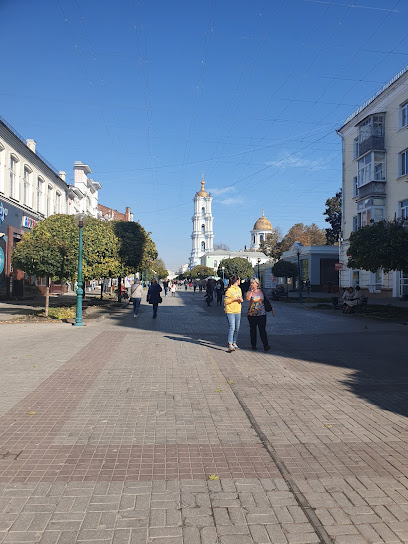
Tribuna Park
Experience the tranquility and beauty of Tribuna Park, a must-visit attraction in Sumy, perfect for nature lovers and cultural explorers.
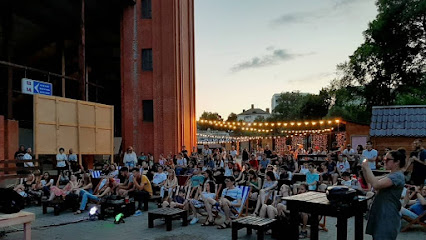
Regional Museum of Art
Explore the Regional Museum of Art in Sumy, a cultural haven showcasing extraordinary collections of Ukrainian and international artworks.
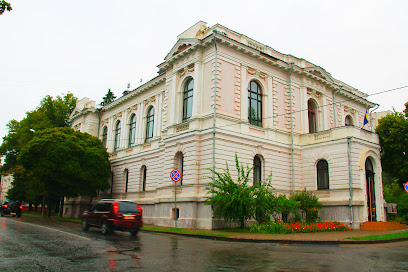
Sumy Regional Museum
Explore the Sumy Regional Museum, a treasure trove of local history and culture in the heart of Sumy, Ukraine.
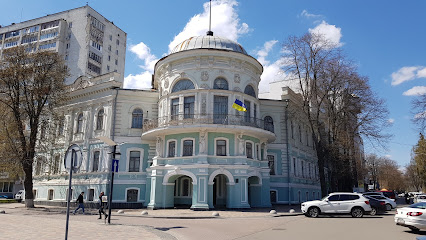
Ivanu Kharytonenku
Discover the historical beauty of Ivanu Kharytonenku in Sumy, a must-visit landmark showcasing Ukraine's rich cultural heritage and serene landscapes.
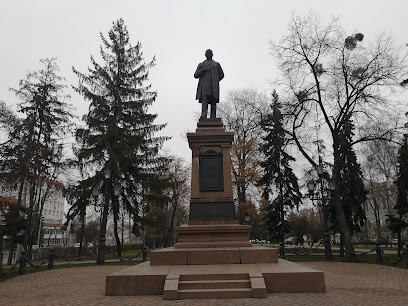
Countess Shterycheva Country Seat
Explore the historic Countess Shterycheva Country Seat in Sumy Oblast, a serene escape into Ukraine's rich architectural legacy.
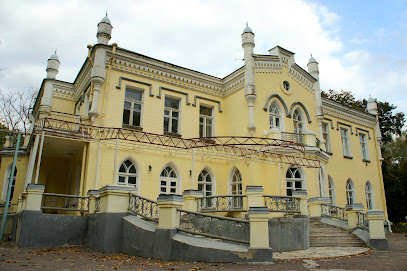
Kharytonenko Old Country Seat
Discover the historical elegance and serene beauty of the Kharytonenko Old Country Seat in Sumy Oblast, a must-visit tourist attraction in Ukraine.
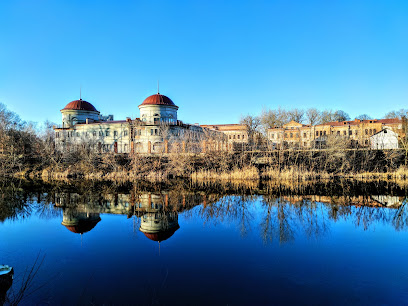
Pysanka
Explore the vibrant world of Ukrainian egg painting at Pysanka in Sumy, a cultural gem showcasing the beauty of traditional art.
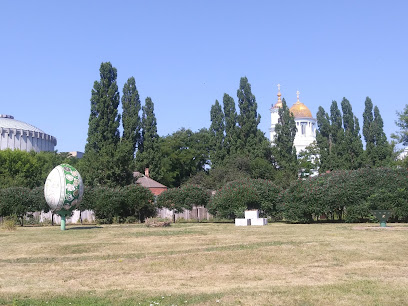
Girl with umbrella
Experience the charm of the 'Girl with Umbrella' sculpture in Sumy's Pokrovska Square, a cultural gem that captures the essence of local artistry and community.

Essential places to dine
McDonald's
Experience the convenience of fast food with delightful breakfast options at McDonald's in Sumy - perfect for tourists on the go!
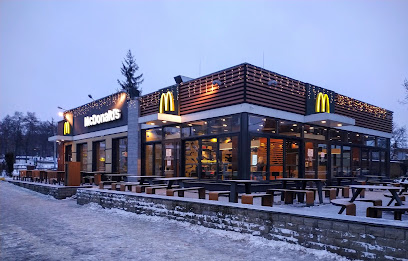
Shalena Shkvarka
Discover the heart of Ukrainian cuisine at Shalena Shkvarka in Sumy—where tradition meets taste in every delicious bite.
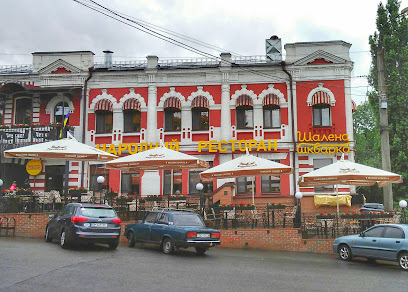
Viva Olive
Experience authentic Italian flavors at Viva Olive in Sumy – where every meal is a culinary journey through Italy's rich traditions.
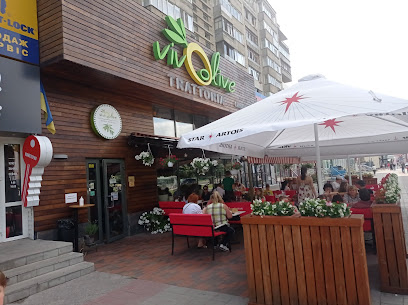
La Spezia
Experience the best of local and international cuisine at La Spezia in Sumy, where every meal is crafted with passion and fresh ingredients.
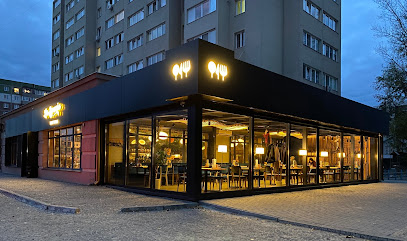
Kozatsʹka Brovarnya
Experience authentic Ukrainian flavors at Kozatsʹka Brovarnya, Sumy's top brewpub for craft beer lovers and food enthusiasts alike.

Sazha
Experience the best of Ukrainian and international cuisine at Sazha, Sumy's culinary treasure offering delightful flavors in a cozy atmosphere.
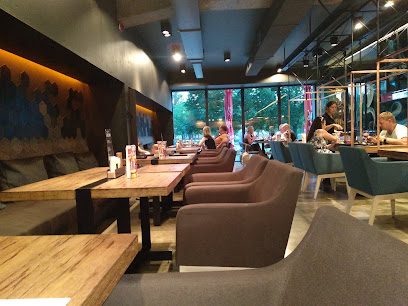
Zdybanka Hotel
Discover comfort and relaxation at Zdybanka Hotel in Sumy – your perfect getaway with exceptional amenities and local charm.

Safari
Discover the best pizza and sushi at Safari in Sumy - where culinary traditions meet modern flavors.
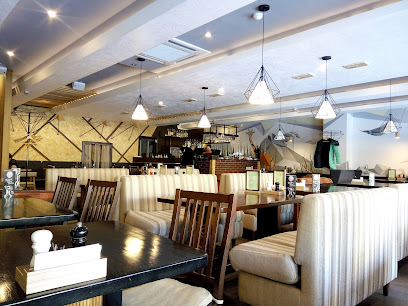
Стумари
Experience authentic Georgian cuisine in Sumy at Стумари – where tradition meets flavor in a cozy setting.
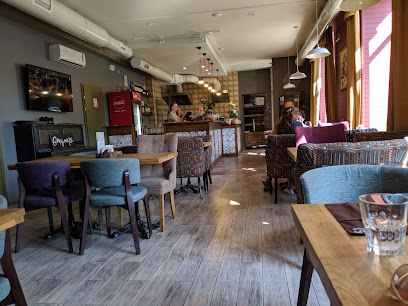
Vin&Gret
Experience exquisite dining at Vin&Gret in Sumy – where tradition meets innovation in every dish.

Puri Marili
Discover the authentic taste of Georgia at Puri Marili in Sumy – where every dish tells a story and every visit feels like home.
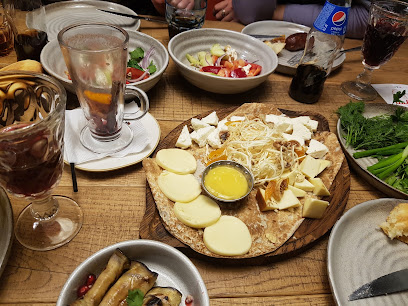
Alʹbion
Discover the rich flavors of grilled cuisine at Alʹbion in Sumy - where every dish tells a story.
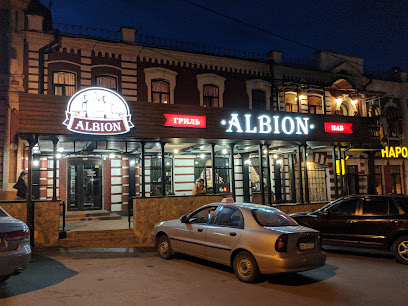
Be Happy
Discover culinary bliss at Be Happy in Sumy - where local flavors meet international flair in a cozy atmosphere.
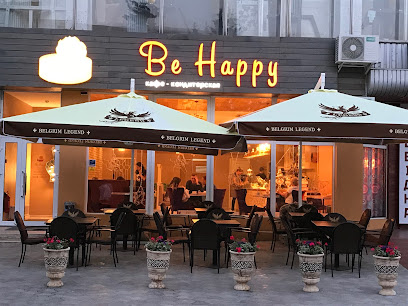
Kozachok
Experience authentic Ukrainian cuisine at Kozachok in Kosivshchyna - where every dish tells a story.
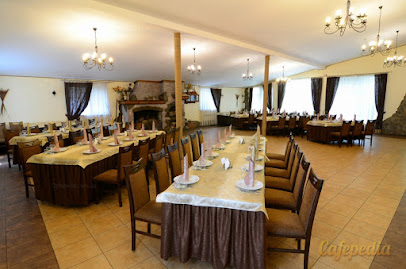
Italiamo
Experience authentic Italian cuisine at Italiamo in Sumy – where every meal is a celebration of flavor and tradition.
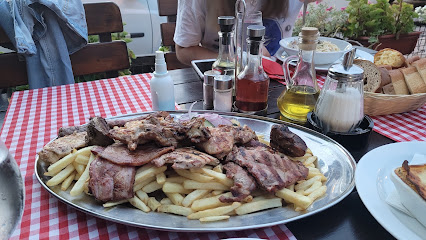
Markets, malls and hidden boutiques
Kyiv
Explore Kyiv: A premier shopping mall in Sumy blending retail, amusement, and delicious dining for an unforgettable experience.
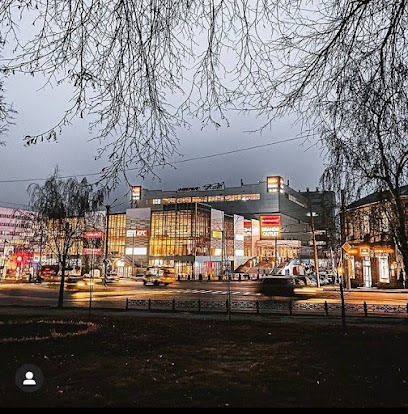
Teatralʹna Kondytersʹka
Discover the sweetness of Sumy at Teatralʹna Kondytersʹka, a haven for dessert lovers featuring exquisite pastries and delightful cakes.
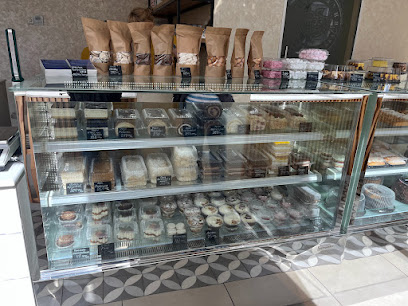
Lviv Handmade Chocolate
Experience the rich flavors of Lviv Handmade Chocolate, a cozy haven in Sumy for chocolate lovers and coffee enthusiasts alike.
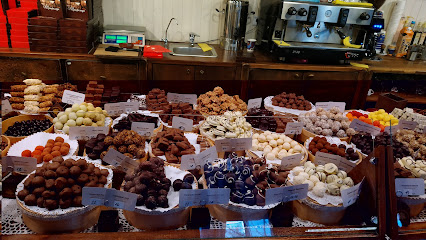
Kniharnya.E
Discover Kniharnya.E in Sumy - a cozy bookstore filled with literary treasures and a welcoming atmosphere for every book lover.
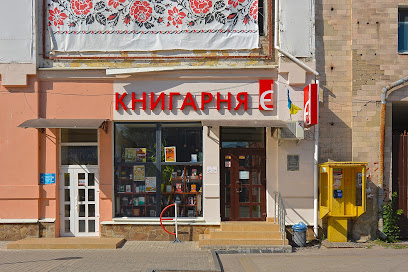
Магазин Пряжа
Explore your creativity at Магазин Пряжа, Sumy's enchanting needlework shop offering a rich selection of yarns and crafting supplies.

Knyholyub
Discover Knyholyub, a cozy book store in Sumy, where literature comes alive in a warm and inviting atmosphere, perfect for every book lover.
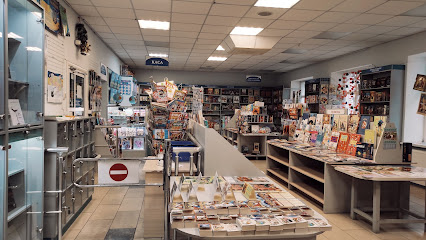
BOTTLE&CUP
Experience the warm ambiance and exquisite coffee at BOTTLE&CUP, Sumy's favorite coffee shop for locals and tourists alike.
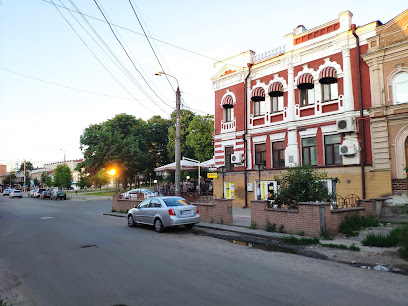
sinsay
Discover affordable fashion and trendy styles at Sinsay in Sumy, your ultimate shopping destination for stylish clothing and accessories.

Labirynt
Explore Labirynt Shopping Mall in Sumy - your ultimate destination for shopping, dining, and local culture in Ukraine.
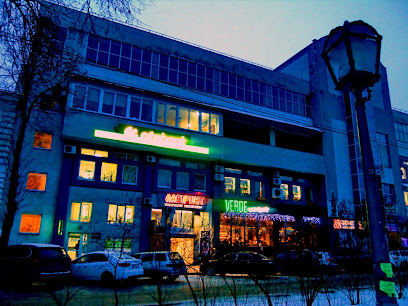
Turist
Explore Sumy's premier sporting goods store, offering top-notch equipment and local expertise for all your outdoor adventures.
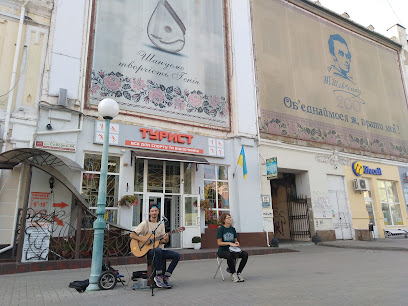
Monami
Explore the delightful world of sweets at Monami, Sumy's premier confectionery store, where every bite tells a story.
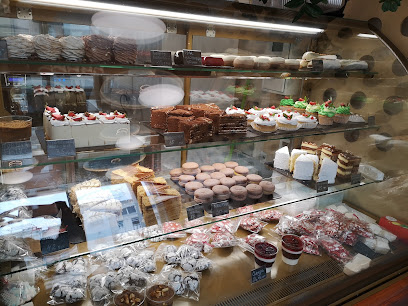
Store Camp
Discover adventure at Store Camp, your ultimate destination for sporting goods and equipment rentals in Sumy, Ukraine.
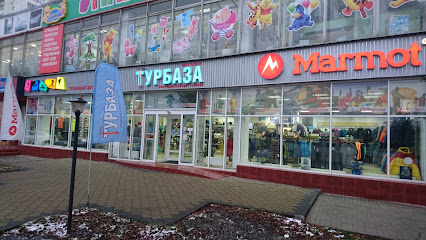
No taboo
Discover a welcoming space for adult explorations at No Taboo in Sumy, where variety meets comfort in an unforgettable shopping experience.
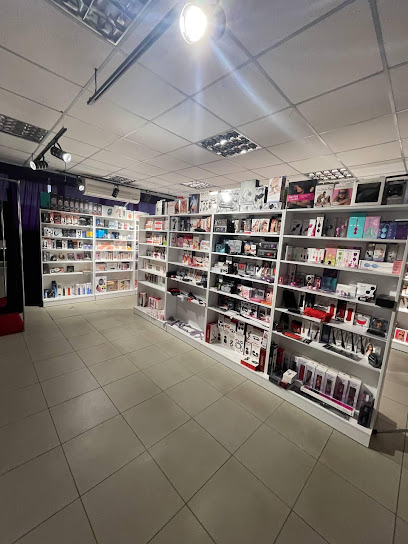
Logovo Konditera
Discover the sweet essence of baking at Logovo Konditera in Sumy, where quality supplies and delicious treats inspire your culinary creativity.
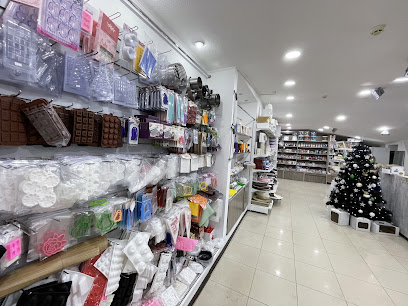
TA-DA! Товари для дому. Щодня!
Explore TA-DA! in Sumy for a diverse selection of home goods, toys, and office supplies at unbeatable prices, perfect for every shopper.
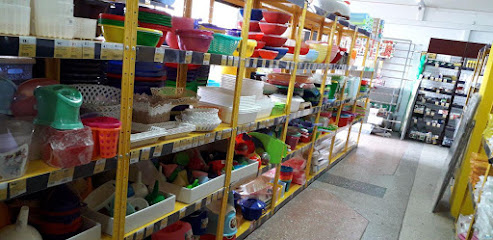
Essential bars & hidden hideouts
Irish Pub O'GRADY'S
Discover the vibrant spirit of Ireland at O'GRADY'S Irish Pub in Sumy, serving authentic cuisine and warm hospitality in a lively atmosphere.
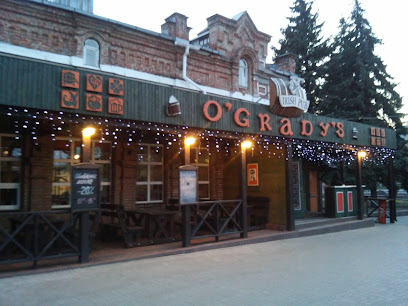
Marinade
Discover Marinade Bar in Sumy for a vibrant nightlife experience with exquisite cocktails and a lively atmosphere that will enhance your travel memories.
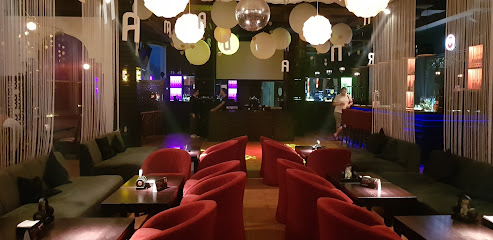
Білий Налив / Белый Налив
Experience the essence of local flavors at Білий Налив, Sumy's premier cider bar, known for its wide selection of craft ciders and inviting atmosphere.
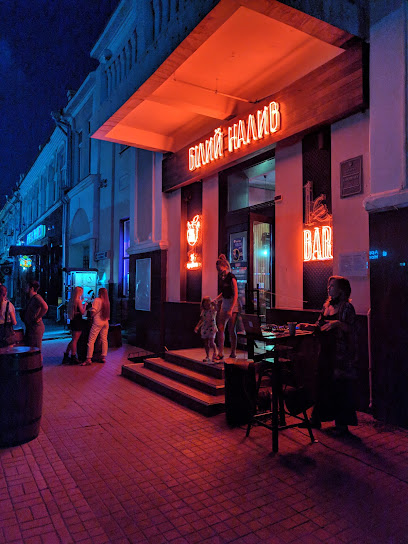
Johnny English
Discover the lively charm of Johnny English Pub in Sumy, where delicious food and great drinks await every traveler.
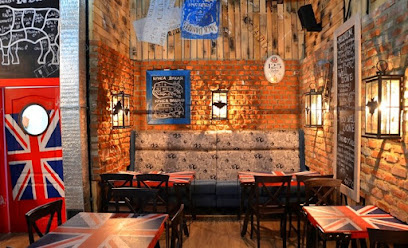
Elf
Discover the vibrant Elf Bar in Sumy, where lively atmosphere meets an impressive drink selection in the heart of Ukraine.
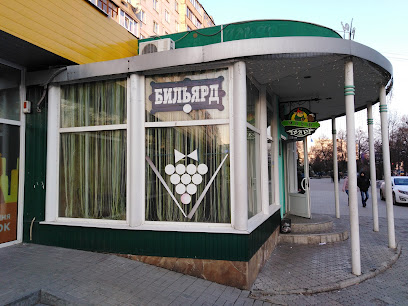
Old Pub
Discover the vibrant atmosphere of Old Pub in Sumy, where traditional Ukrainian cuisine meets a lively social scene.
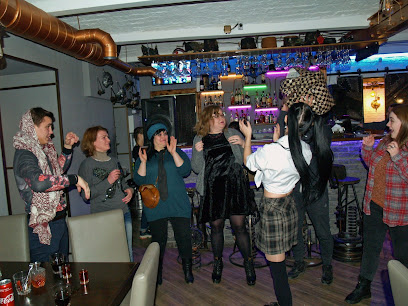
Prospekt
Discover the vibrant atmosphere of Prospekt, a must-visit bar in Sumy offering an extensive drink menu and lively entertainment.
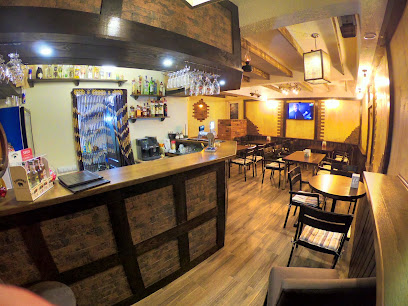
Pub Na Pselʹsʹkiy
Experience the best of Sumy's local brewpub culture at Pub Na Psel's'kiy, where craft beers and delicious cuisine meet in a charming setting.
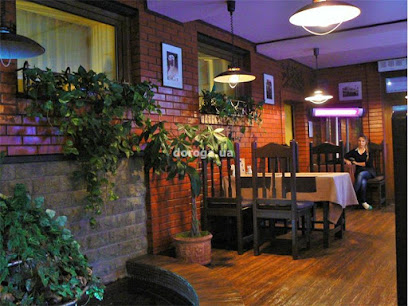
Natyur
Discover the exquisite world of wines at Natyur, a charming wine bar in Sumy offering a curated selection and a cozy atmosphere.
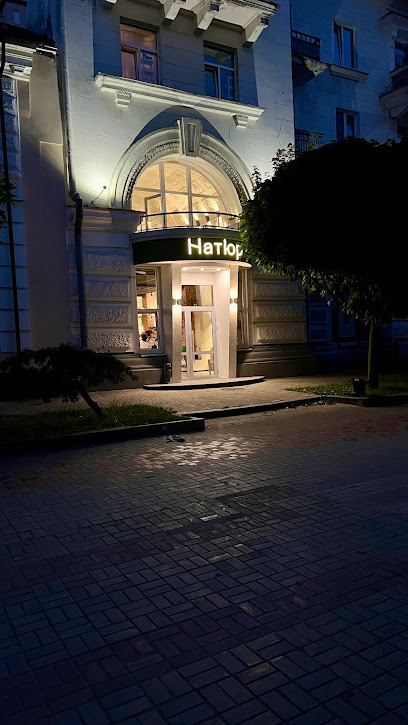
Queen
Experience the vibrant nightlife of Sumy at Queen, a charming bar offering a delightful selection of local drinks and a warm atmosphere.

Андерграунд
Enjoy a lively pub experience at Андерграунд in Sumy, where local flavors and vibrant nightlife come together.

Ark Lounge&Bar
Experience the vibrant nightlife at Ark Lounge&Bar, Sumy's cozy retreat for exquisite drinks and lively ambiance.
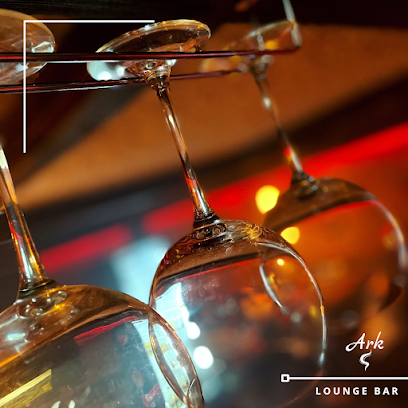
Charochna
Discover the vibrant atmosphere and diverse drink selection at Charochna, a must-visit bar in Sumy for an authentic local experience.

Бананы
Discover the lively bar scene in Sumy at Бананы, where vibrant drinks and a friendly atmosphere await every visitor.
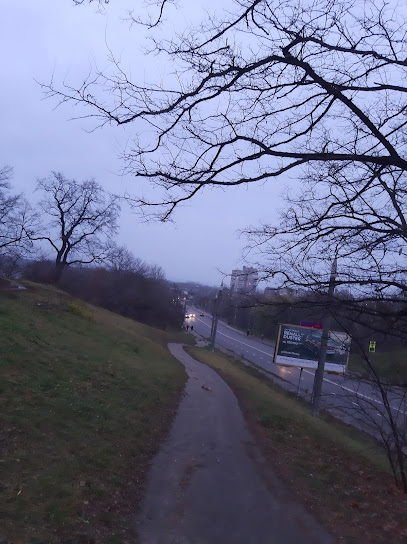
Baraboss
Experience the vibrant nightlife of Sumy at Baraboss, where exceptional drinks meet a lively atmosphere for an unforgettable night out.
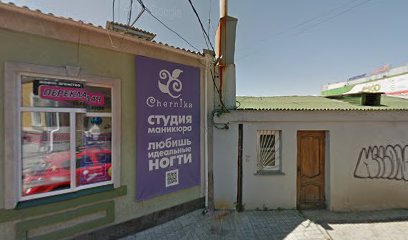
Local Phrases about Sumy Region
-
- HelloПривіт
[pryvit] - GoodbyeДо побачення
[do pobachennya] - YesТак
[tak] - NoНі
[ni] - Please/You're welcomeБудь ласка
[budʹ laska] - Thank youДякую
[dyakuyu] - Excuse me/SorryВибачте
[vybachte] - How are you?Як справи?
[yak spravy?] - Fine. And you?Добре. А ви?
[dobre. A vy?] - Do you speak English?Ви говорите англійською?
[vy hovoryte anhliysʹkoyu?] - I don't understandЯ не розумію
[ya ne rozumiyu]
- HelloПривіт
-
- I'd like to see the menu, pleaseЯ б хотів подивитися меню, будь ласка
[ya b khotiv podyvytysya menyoo, budʹ laska] - I don't eat meatЯ не їм м'ясо
[ya ne yim myaso] - Cheers!Будьмо!
[budʹmo!] - I would like to pay, pleaseЯ б хотів розрахуватися, будь ласка
[ya b khotiv rozrakhuvatysya, budʹ laska]
- I'd like to see the menu, pleaseЯ б хотів подивитися меню, будь ласка
-
- Help!Допоможіть!
[dopomozhitʹ!] - Go away!Ідіть геть!
[iditʹ hetʹ!] - Call the Police!Викличте поліцію!
[vyklychte politsiyu!] - Call a doctor!Викличте лікаря!
[vyklychte likarya!] - I'm lostЯ загубився
[ya zahubyvsya] - I'm illЯ хворий
[ya khvoryy]
- Help!Допоможіть!
-
- I'd like to buy...Я б хотів купити...
[ya b khotiv kupity...] - I'm just lookingЯ просто дивлюся
[ya prosto divlyusya] - How much is it?Скільки це коштує?
[skilʹky tse koshtuye?] - That's too expensiveЦе занадто дорого
[tse zanadto doroho] - Can you lower the price?Чи можете ви знизити ціну?
[chy mozhete vy znyzyty tsinu?]
- I'd like to buy...Я б хотів купити...
-
- What time is it?Котра година?
[kotra hodyna?] - It's one o'clockОдна година
[odna hodyna] - Half past (10)Пів на одинадцяту
[piv na odynadtsyatu] - MorningРанок
[ranok] - AfternoonДень
[denʹ] - EveningВечір
[vechir] - YesterdayВчора
[vchora] - TodayСьогодні
[sohodni] - TomorrowЗавтра
[zavtra] - 1один
[odyn] - 2два
[dva] - 3три
[try] - 4чотири
[chotyry] - 5п'ять
[pyatʹ] - 6шість
[shistʹ] - 7сім
[sim] - 8вісім
[visim] - 9дев'ять
[deyaty] - 10десять
[desyatʹ]
- What time is it?Котра година?
-
- Where's a/the...?Де є...?
[de ye...?] - What's the address?Яка адреса?
[yaka adresa?] - Can you show me (on the map)?Чи можете ви показати мені (на мапі)?
[chy mozhete vy pokazaty meni (na mapi)?] - When's the next (bus)?Коли наступний (автобус)?
[koly nastupnyy (avtobus)?] - A ticket (to ....)Квиток (до ....)
[kvitok (do ....)]
- Where's a/the...?Де є...?
History of Sumy Region
-
The Sumy Region, located in northeastern Ukraine, has a rich history dating back to ancient times. Archaeological findings reveal that the area was inhabited by various tribes, including the Scythians, in the first millennium BCE. Numerous burial mounds and artifacts have been discovered, indicating a well-established culture and trade networks.
-
During the 10th and 11th centuries, the Sumy Region became part of the Kievan Rus', a powerful medieval state. This period saw the establishment of several fortified settlements and the spread of Christianity. The region was an important trade route, connecting the Baltic and Black Seas.
-
In the 13th century, the Mongol invasion brought significant upheaval to the Sumy Region. Many settlements were destroyed, and the area came under the control of the Golden Horde. Despite the devastation, some towns and fortresses managed to survive and rebuild in the following centuries.
-
By the 14th century, the Sumy Region became part of the Grand Duchy of Lithuania, and later, the Polish-Lithuanian Commonwealth. This era introduced new administrative structures and cultural influences. The region's strategic importance continued to grow, and several castles and fortifications were built to protect it from invasions.
-
In the mid-17th century, the Sumy Region played a crucial role in the formation of the Cossack Hetmanate, a semi-autonomous state under the suzerainty of the Russian Tsar. Sumy itself was founded in 1652 as a Cossack town. The region became a hub for Cossack culture and military activities, with numerous skirmishes and battles fought in its territory.
-
Following the Treaty of Pereyaslav in 1654, the Sumy Region was gradually incorporated into the Russian Empire. This period saw significant development, with the establishment of new towns, industries, and infrastructure. The region's fertile land made it an important agricultural center, contributing to the empire's economy.
-
During World War II, the Sumy Region experienced severe destruction and hardship under German occupation from 1941 to 1943. Many locals joined the partisan resistance, while others were subjected to forced labor and persecution. The region's liberation by Soviet forces marked a significant turning point in the war on the Eastern Front.
-
After World War II, the Sumy Region underwent extensive reconstruction and modernization under Soviet rule. Industrialization efforts led to the growth of major industries, including machinery, chemicals, and textiles. The region's educational and cultural institutions also flourished during this time.
-
Following Ukraine's declaration of independence in 1991, the Sumy Region embarked on a path of economic and cultural transformation. Efforts to preserve the region's rich historical heritage have been complemented by modern development initiatives. Today, the Sumy Region is known for its vibrant cultural scene, historical landmarks, and picturesque landscapes.
Sumy Region Essentials
-
Sumy Region is accessible via multiple transportation methods. The nearest international airport is Boryspil International Airport in Kyiv, approximately 350 kilometers away. From Kyiv, you can take a train or a bus to Sumy city, the administrative center of the region. Trains from Kyiv to Sumy typically take around 5-7 hours, while buses can take between 6-8 hours. Alternatively, you can rent a car and drive, which offers the flexibility to explore the countryside at your own pace.
-
Within Sumy Region, transportation options include buses, minibuses (marshrutkas), taxis, and car rentals. Sumy city has a well-developed public transportation system with buses and trolleybuses covering most areas. For intercity travel within the region, marshrutkas are a popular and affordable choice. Taxis are readily available and can be hailed on the street or by using mobile apps. Renting a car is also a viable option for exploring more remote areas and allows for greater flexibility.
-
The official currency in Ukraine is the Ukrainian Hryvnia (UAH). Credit cards are widely accepted in Sumy city, especially in hotels, restaurants, and larger stores. However, in smaller towns and rural areas, cash is preferred. ATMs are available in most urban areas, but it's advisable to carry some cash with you, particularly when traveling to more remote locations.
-
Sumy Region is generally safe for tourists. However, like any other destination, it is important to exercise standard precautions. Avoid walking alone at night in unfamiliar areas and keep an eye on your belongings in crowded places. There are no specific high-crime areas targeting tourists, but it is always best to stay vigilant and aware of your surroundings. It is also advisable to check for any travel advisories from your home country before your trip.
-
In case of emergency, dial 112 for immediate assistance. This number connects you to emergency services including police, fire, and medical assistance. Sumy Region has hospitals and medical facilities in major towns and cities. It is recommended to have travel insurance that covers medical emergencies. Pharmacies are available in urban areas for minor health issues and over-the-counter medications.
-
Fashion: Do dress modestly, especially when visiting religious sites. Avoid wearing overly casual or revealing clothing. Religion: Do respect local customs and traditions. When visiting churches or monasteries, women should cover their heads and shoulders, and men should remove hats. Public Transport: Do be respectful and give up your seat to elderly passengers or those with disabilities. Don't eat or drink on public transport. Greetings: Do greet people with a firm handshake and maintain eye contact. A slight nod of the head is also a sign of respect. Eating & Drinking: Do try local delicacies and accept food offerings graciously. Don't refuse hospitality, as it is considered impolite.
-
To experience Sumy Region like a local, visit the local markets where you can buy fresh produce, traditional Ukrainian goods, and handmade crafts. Engage with locals; they are often friendly and willing to share stories about the region's history and culture. Don't miss visiting historical landmarks such as the Sumy Regional Art Museum and the Troitsky Cathedral. For a unique experience, take a walk along the Psel River or explore the picturesque landscapes of the Hlukhiv National Nature Park.
Nearby Cities to Sumy Region
-
Things To Do in Kharkiv
-
Things To Do in Poltava
-
Things To Do in Kremenchuk
-
Things To Do in Chernihiv
-
Things To Do in Cherkasy
-
Things To Do in Kyiv
-
Things To Do in Kropyvnytskyi
-
Things To Do in Zaporozhye
-
Things To Do in Zaporizhzhia
-
Things To Do in Kryvyi Rih
-
Things To Do in Donetsk
-
Things To Do in Mariupol
-
Things To Do in Vinnytsia
-
Things To Do in Kherson
-
Things To Do in Khmelnytskyi





